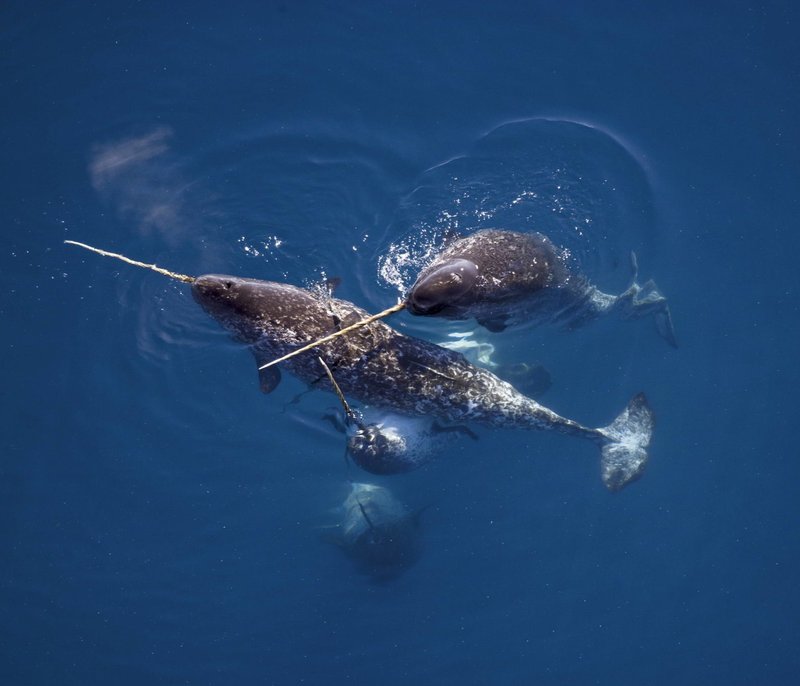
Understanding the narwhal’s adaptations not only piques our curiosity about this fascinating creature but also highlights the wonders of evolution and survival. So, grab your favorite warm drink, and let’s dive into the incredible world of narwhals and the amazing traits that help them thrive under the sea.
Unique Physical Features
When you first lay eyes on a narwhal, what stands out is that distinctive tusk. This appendage isn’t just for show; it’s a long tooth that can grow up to 10 feet long! Can you imagine? This tusk plays a variety of roles, from helping narwhals with social interactions to aiding in their hunting strategies. It’s believed that these unique tusks can be used to breach the ice, helping narwhals navigate their frigid habitat. The tusk also plays a role in mating rituals, where males engage in what scientists call “tusk jousting” to attract potential mates.
Additionally, narwhals have a robust body shape that is perfectly designed for swimming in icy waters. They can reach lengths of up to 16 feet, which helps them glide through their underwater environment with ease. Their skin is smooth and streamlined, minimizing drag while swimming. Plus, the dark gray coloration of their skin provides camouflage against predators and also aids in thermoregulation, ensuring they remain warm in cold waters.
Exceptional Diving Abilities
One of the most remarkable adaptations of narwhals is their exceptional diving capabilities. These marine mammals can dive to impressive depths—often over 1,500 meters (almost a mile) in search of food. Imagine holding your breath for that long! Narwhals can stay submerged for up to 25 minutes, which is crucial for hunting squid and other prey found deep beneath the ice.
To help them dive so deep, narwhals have a flexible rib cage that allows their lungs to collapse under pressure without causing harm. This means they can withstand immense underwater pressure while still getting the oxygen they need for their long dives. The narwhal’s body is also rich in myoglobin, a protein that stores oxygen in muscle tissues, ensuring they have enough energy during those lengthy underwater excursions.
Adaptations for Hunting
Here’s the thing: hunting in dark, icy waters isn’t easy! Narwhals have adapted various strategies to make hunting successful. For starters, their echolocation abilities are impressive. They use clicks and whistles to communicate and to navigate in their underwater realm. These sounds bounce off objects, helping narwhals locate prey even in the dark.
Moreover, their keen eyesight is another weapon in their hunting arsenal. Narwhals are equipped to see well in the low-light conditions of deep water, giving them a competitive edge when they’re stalking their prey. They primarily feed on fish, squid, and even shrimp, and their unique adaptations ensure they can find and capture these elusive meals effectively.
Tusks as Sensory Organs
While most people think of the narwhal’s tusk as just a prominent feature, it actually serves as a sensory tool. Researchers have discovered that the tusk is packed with millions of nerve endings, allowing narwhals to detect changes in their environment. This means the tusk isn’t only used for hunting or social interactions, but it also plays an essential role in sensing water temperature, pressure, and even chemical changes in the water.
This sensory adaptation helps narwhals locate prey and navigate icy waters, making them incredibly skilled hunters. It’s almost like having a built-in radar system! This ability to sense changes enhances their survival, helping them locate food sources while avoiding potential dangers in their frigid habitat.
Social Structure and Communication
Narwhals also exhibit interesting social behavior that contributes to their survival. They often travel in groups called pods, which can range from a few individuals to as many as 20 or more. This social structure is essential for a couple of reasons. For one, pods can offer protection against predators, such as orcas. Plus, group living helps narwhals communicate and coordinate during hunts.
Communication among narwhals includes a variety of clicks, whistles, and buzzes. These sounds are important not only for social interactions but also for navigation and hunting. When they’re in a group, these vocalizations can help narwhals coordinate their movements, ensuring they’re working together effectively—all while remaining hidden from their prey!
Adapting to Climate Change
In recent years, the Arctic environment has been changing dramatically due to climate change. As sea ice melts, narwhals face new challenges, including shifting food sources and increased competition with other marine mammals. Their ability to adapt to such changes is crucial for their survival.
Narwhals are known to be flexible in their feeding habits. While they primarily eat squid and fish, they can adjust their diet when necessary. This adaptability gives them a better chance of thriving despite their changing environment. Furthermore, their extensive migratory patterns allow them to seek out areas with stable ice and abundant prey, ensuring they can survive in shifting conditions.
The narwhal, with its fascinating adaptations, truly symbolizes the wonders of evolution. From its long tusk that serves multiple purposes to its exceptional diving abilities, this creature is a master of survival in extreme conditions. By understanding these adaptations, we gain insight into the delicate balance of life in the Arctic and how species like the narwhal navigate their ever-changing world.
As we witness the impacts of climate change, it’s essential to appreciate how resilient animals like the narwhal are. They remind us of the importance of protecting their habitat, ensuring that these enchanting creatures continue to thrive beneath the icy depths. So, the next time you think of the narwhal, remember: it’s not just a pretty face; it’s a marvel of nature!

